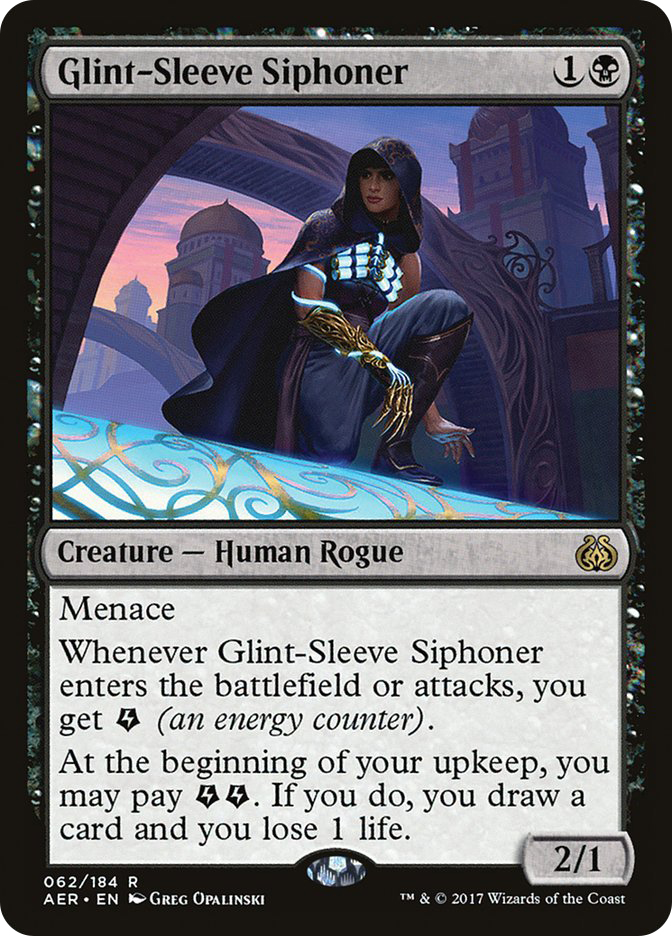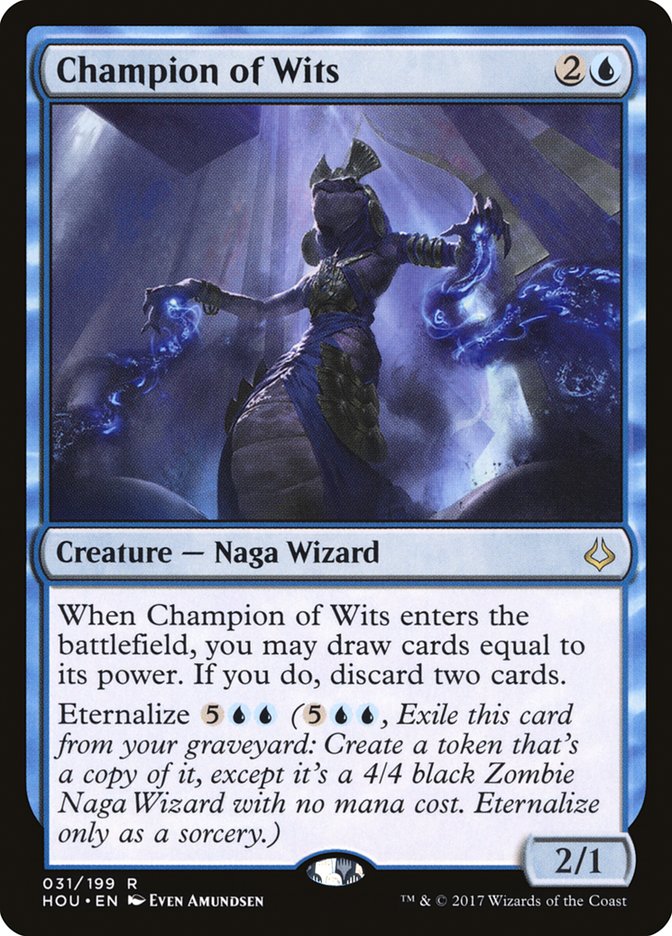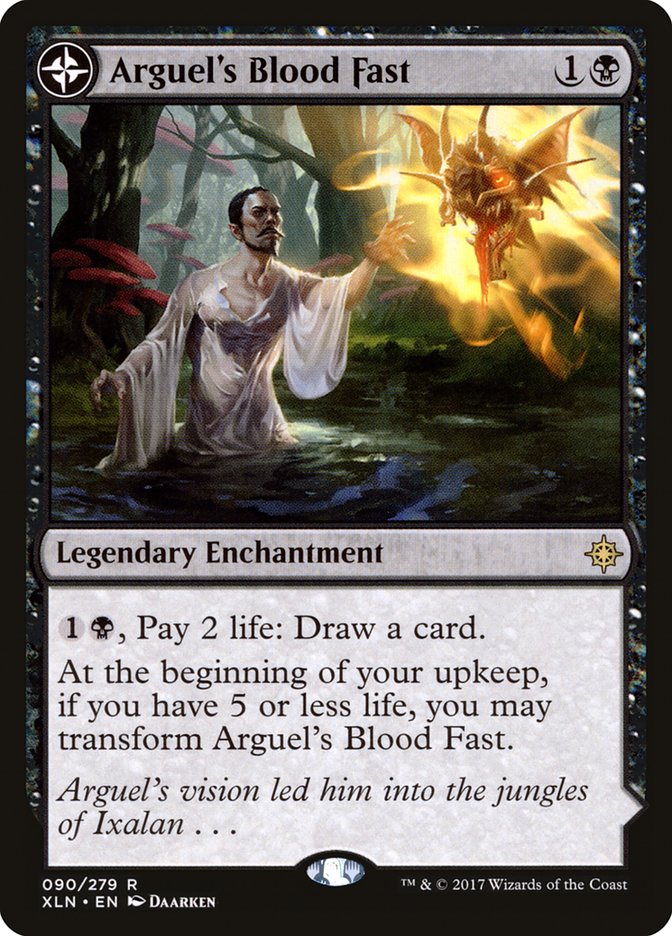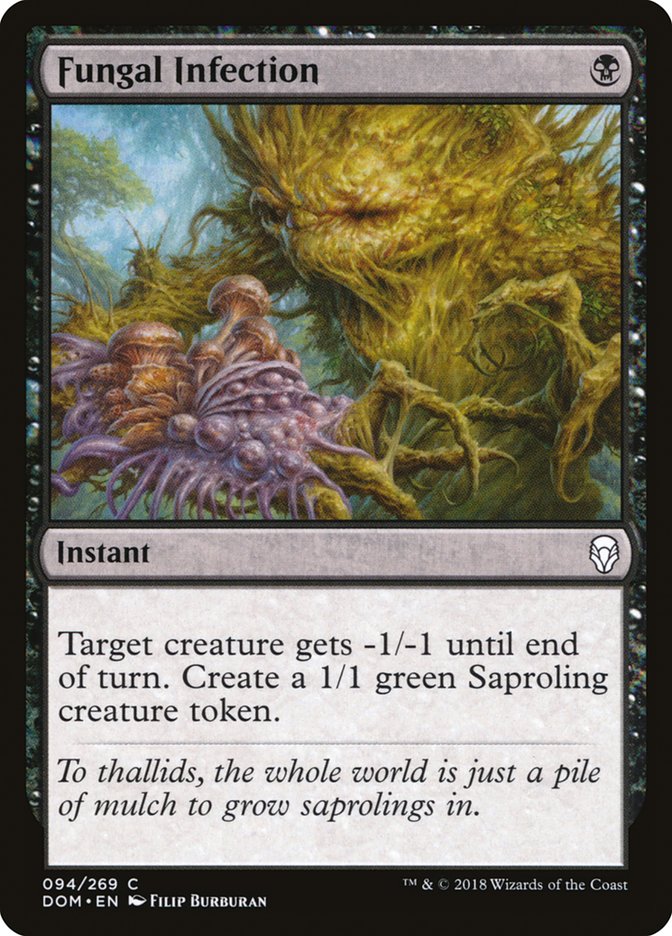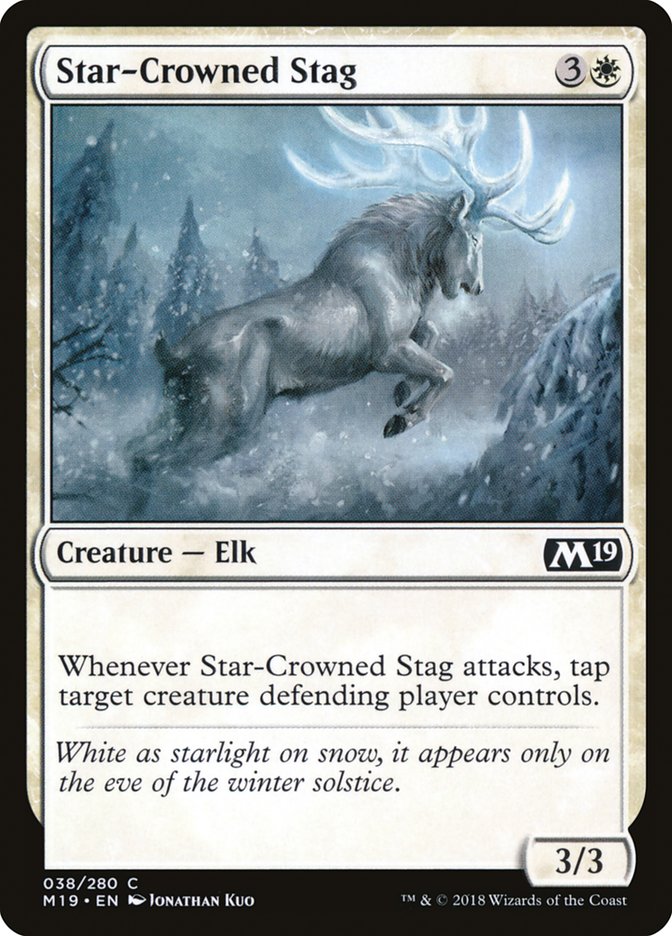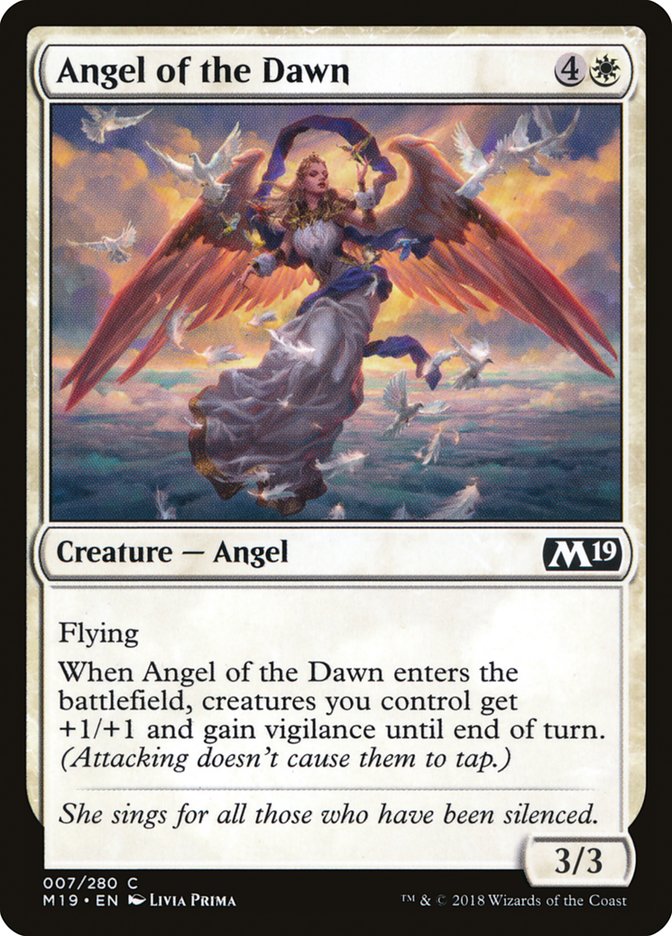Last year, Nationals returned to the competitive Magic stage. Whilst there
was some amount of criticism of the return not matching up to how Nationals
used to be, for someone like me who has only been playing a few years, my
first taste of Nationals was the first time I really got to experience the
English competitive Magic community being gathered together properly ever
since the old PTQ system disappeared. My fond memories of the event came
with at least a bit of bias though, as I went undefeated all weekend,
winning the event with Four-Color Energy.
This last weekend was my second ever Nationals, and, well…
This weekend I defeated a field of over 450 players to become
back-to-back English National Champion! I am so incredibly happy, and
thrilled to be attending the WMC again! #MTGnationals
pic.twitter.com/SvPvx7xIl0—
Autumn Burchett (@AutumnLilyMTG) August
19, 2018
I’m thrilled to have taken down Nationals for the second year running, and
alongside having received a lot of love and support after my victory, I’ve
also received a lot of interest in talking about the tournament, and the
Standard deck I took it down with – B/U Midrange.
Choosing B/U Midrange
A number of people were surprised that I ended up choosing B/U Midrange for
the event, largely because the weekend prior I finished 17th place at GP
Brussels with Bant Nexus. I consider Bant Nexus one of the most powerful
decks in Standard currently, capable of generating a frightening amount of
inevitability given time to develop its mana and sculpt its hand. From just
six lands and two Gift of Paradise on the battlefield, the deck can
threaten to cast a Teferi, Hero of Dominaria for virtually one mana, cast
Nexus of Fate in its end step, and then your opponent could quite
reasonably never get to take another turn.
Planeswalkers (6)
Lands (26)
Spells (28)

The problem was that whilst the deck still felt reasonably well-positioned
for that Grand Prix, the hate towards the deck felt like it really ticked
up in the week following. I was struggling to cash a league with the deck
on Magic Online anymore with people being both more prepared for the deck
and more used to playing against it. I was terrified that with the hatred
the deck was receiving among my testing group that people would be very
prepared for the deck at Nationals (I heard of more than one example of
maindeck Insult in the room at the tournament, so it would appear I was not
too wrong about this). I still felt like the deck was powerful enough that
it would be a fine choice for Nationals, especially as the Bant Nexus lists
became more refined, but I also felt like I could find something better.
The other factor was that I knew the most competitive team in England was
very excited about Bant Nexus, and that as a result many of the best
players in the room would be playing the deck. Even if people were prepared
for the deck, it would be hard to avoid facing it on the top tables. With
this in mind, I was keen to be on the deck that beats Bant Nexus, which B/U
Midrange seemed perfectly positioned to do.
Creatures (14)
Planeswalkers (1)
Lands (26)
Spells (19)

This is the 75 I won English Nationals with, working together on preparing
the list with fellow StarCityGames.com writer Jadine Klomparens. I’d
strongly recommend it going forward, though I’m keen to swap the Ifnir
Deadlands for another Swamp – this deck is very good at finding uses for
its mana every turn, even when flooding, thanks to Champion of Wits, The
Scarab God, and Arguel’s Blood Fast, so you never really end up in a
situation where activating Ifnir Deadlands is better than literally
anything else you could be doing.
The archetype has a huge number of reasons for being so appealing beyond
its good Bant Nexus matchup where Glint-Sleeve Siphoner is a nightmare card
and where you have enough good interaction to win a healthy number of game
1s whilst being a huge favourite in sideboard games.
One of the things I find most exciting about the archetype is how many
games you actually get to play with it. B/U Midrange is low variance,
thanks to Glint-Sleeve Siphoner drawing you additional cards early and
Champion of Wits, both digging for your next couple land drops early whilst
also giving you something powerful to do should you be flooding at all.
Games where you stumble on mana simply happen less often than with other
decks, and the amount of cheap interaction the deck has access to means
that when you do stumble on mana, that isn’t necessarily lights out.
Another one of the big draws to the deck is the sheer power of Arguel’s
Blood Fast in this strategy. No other deck in the format so confidently
gets to play this card in the maindeck, yet a resolved Blood Fast is often
game-ending against the control decks, and a transformed Blood Fast
combined with The Scarab God, or even just a Torrential Gearhulk,
represents so much lifegain that the aggressive decks simply can’t close
against you anymore once you reach that gamestate. The inclusion of Blood
Fast is a big part of the reason why the deck can put up a real fight
against R/B Aggro, with Temple of Aclazotz not only giving you absurd
amounts of life but also blanking the damage that Unlicensed Disintegration
would normally deal to you.
Some features of the list that I personally advocate:
-
Ravenous Chupacabra is worse than just playing more cheap
interaction, as you really aren’t lacking in things to do with
spare mana. Hostage Taker gets a nod though partially because it is
much more versatile, and also because of its utility in the face of
a Vine Mare, letting you steal other green creatures to keep the
Horse at bay. -
The third copy of Field of Ruin is key, both because there are a
lot of Search for Azcantas running around the format and also
because being able to consistently enable revolt on Fatal Push is
really important to this deck so that you can save your Vraksa’s
Contempts for more important targets. Jadine recommended cutting an
Aether Hub for this as draws with multiple Aether Hubs can get
really awkward, and honestly I would never go back to playing the
full four. -
I love having access to a variety of instants in the maindeck for
Torrential Gearhulk. The Supreme Will is in the deck partially with
this in mind, was excellent all weekend at least in part as it lets
you proactively cast Torrential Gearhulks on your opponent’s end
step, and I could see a world in which you’d want another copy of
Supreme Will in the deck perhaps over Liliana, Death’s Majesty. -
There’s a strong theme of cheap interaction in the sideboard, with
cards like Spell Pierce and Fungal Infection being represented. You
draw a lot of cards and often just want to be able to use your mana
efficiently, meanwhile situational interaction like this has a lot
less downside to it when you can pitch it to Champion of Wits as
the game goes long.
The Tournament
With such a large number of players, 443 in total, English Nationals was a
very long affair. Seven rounds of Standard and six rounds of Draft split
across two days, before a cut to Top 8 for yet more Standard. The split
format means that even late into day 2, the top tables have a varied and
vibrant metagame as some number of players up there will be doing well on
the back of good Draft records.
I was decidedly not on the top tables on the back of my Draft record,
scrapping out a pair of 2-1s with two G/W decks. I consider white clearly
the best color in this Draft format, with it being both the deepest colour
at common and featuring some truly power-house commons also – Star-Crowned
Stag and Angel of the Dawn make most of the other common creatures look
embarrassing in comparison. Meanwhile, I rate green a lot higher in the
format than most other players seem to, valuing how well some of the common
creatures like Thornhide Wolves line up against the red removal and the
extent to which green’s massive bodies can dominate battlefield in games
that go long.
What was really carrying me through the tournament was the strength of B/U
Midrange. Ignoring my round 1 bye, I played six rounds of Standard in the
swiss portion of the event against six different archetypes and only
dropped a pair of games in the process, facing Grixis Midrange, Bant Nexus,
Esper Control, R/B Aggro, Mono-Green Aggro, and Mono-Black Control. In the
top 8, I met one of the Bant Nexus players I was expecting to see do well
at the event and that I had chosen B/U Midrange in an effort to beat, and
we played an hour-and-a-half long match – the other finalist was already
decided before my quarterfinals had even ended!
I settled in for another match against Bant Nexus in the semifinals, once
again taking down one of the decks (and one of the players) I had in mind
when I made my deck choice for the event, before meeting Chris Orchard in
finals – a player I had not heard of previously, but who had torn through
the tournament not losing a single match up until this point, and who was
playing a rogue choice in Mono-Black Zombies. After getting run over in
game 1 I sideboarded out my Glint-Sleeve Siphoners in order to blank my
opponent’s Fatal Pushes and morph in to something resembling a U/B Control
deck, relying on Temple of Aclazotz to make The Scarab God wholly
unanswerable to take down the sideboard games.
Sideboard Guide
For those looking to pick up B/U Midrange for RPTQs these coming couple
weekends, for their own country’s Nationals tournaments, or who are
attending GP Richmond, here’s the much requested sideboard guide:
VS R/B Aggro
Out:

In:

VS Mono-Red Aggro:
Out:

In:

Everyone assumes these matchups must be bad because of how many
one-toughness creatures you play in the face of Goblin Chainwhirler. The
reality is that the matchups are very close (and honestly B/U Midrange may
even be a slight favourite over R/B Aggro) provided you play smart in
regard to these one-toughness creatures: try and lean towards planning to
discard Siphoners to your Champion triggers when possible or hold onto them
until your opponent has had enough chances to run out their Chainwhirlers
onto the battlefield. Sometimes, of course, you’ll have to play out
Glint-Sleeve Siphoner on turn 2 as a blocker (for example, if you have no
cheap removal and are on the draw against double Bomat Courier draws) and
just cross your fingers that your opponent doesn’t have Goblin Chainwhirler
in hand – this is not ideal, but will work out in your favor some amount of
the time, and being able to recognize when to take these calculated risks
is really key to the matchup.
VS Bant Nexus
Out:

In:

Fatal Push seems like it should be very bad based on Bant Nexus’ game 1
configuration, but when sideboarding it’s important to prepare for the deck
your opponent will be presenting to you in sideboard games, and every Bant
Nexus opponent I’ve faced so far has sideboarded in Baral, Chief of
Compliance against me. Trying to remove a Baral from the battlefield with
Vraska’s Contempt is a losing battle so I think having access to some
number of Fatal Push is important and not a particularly high cost
considering both that you have Champion of Wits to discard them if you
don’t see Baral, and that the card you’re removing to make room for Fatal
Push is The Scarab God, who looks like a glorified Colossapede in the
matchup.
VS Esper Control
Out:

In:

Similar to the sideboarding plan against Bant Nexus, you want access to
Cast Downs to kill potential Glint-Sleeve Siphoners (Cast Down being
preferable to Fatal Push since it can tag opposing Torrential Gearhulk). I
trim on Vraska’s Contempt, even though it’s incredibly important game 1,
because after sideboard I’m looking to answer Teferi, Hero of Dominaria
with discard spells or counterspells if at all possible so that I’m not
getting two-for-one’d in the exchange.
VS U/W Control
Out:

In:

VS Mono-Green Aggro:
Out (on the play):

In (on the play):

Out (on the draw):

In (on the draw):

I think having an additional answer to Llanowar Elves when you’re on the
draw is critical, as those games can spiral out of control easily, hence
the Fungal Infection coming in in that situation.
VS B/U Midrange
Out:

In:

Duress comes in in this matchup partially to answer Arguel’s Blood Fast and
Search for Azcanta (which are both terrifying) and partially to proactively
protect The Scarab God; taking away their Essence Scatter or Vraska’s
Contempt before casting your Scarab God can steal games.
VS Grixis Midrange
Out:

In:

I’m thrilled to have won Nationals again and looking forward to attending
the World Magic Cup for the second year in a row – last year’s WMC was
perhaps my favorite tournament I have attended. Before that though I am
keen to pick up B/U Midrange once more for my RPTQ in a couple weeks to try
and give The Scarab God the send-off it deserves.


